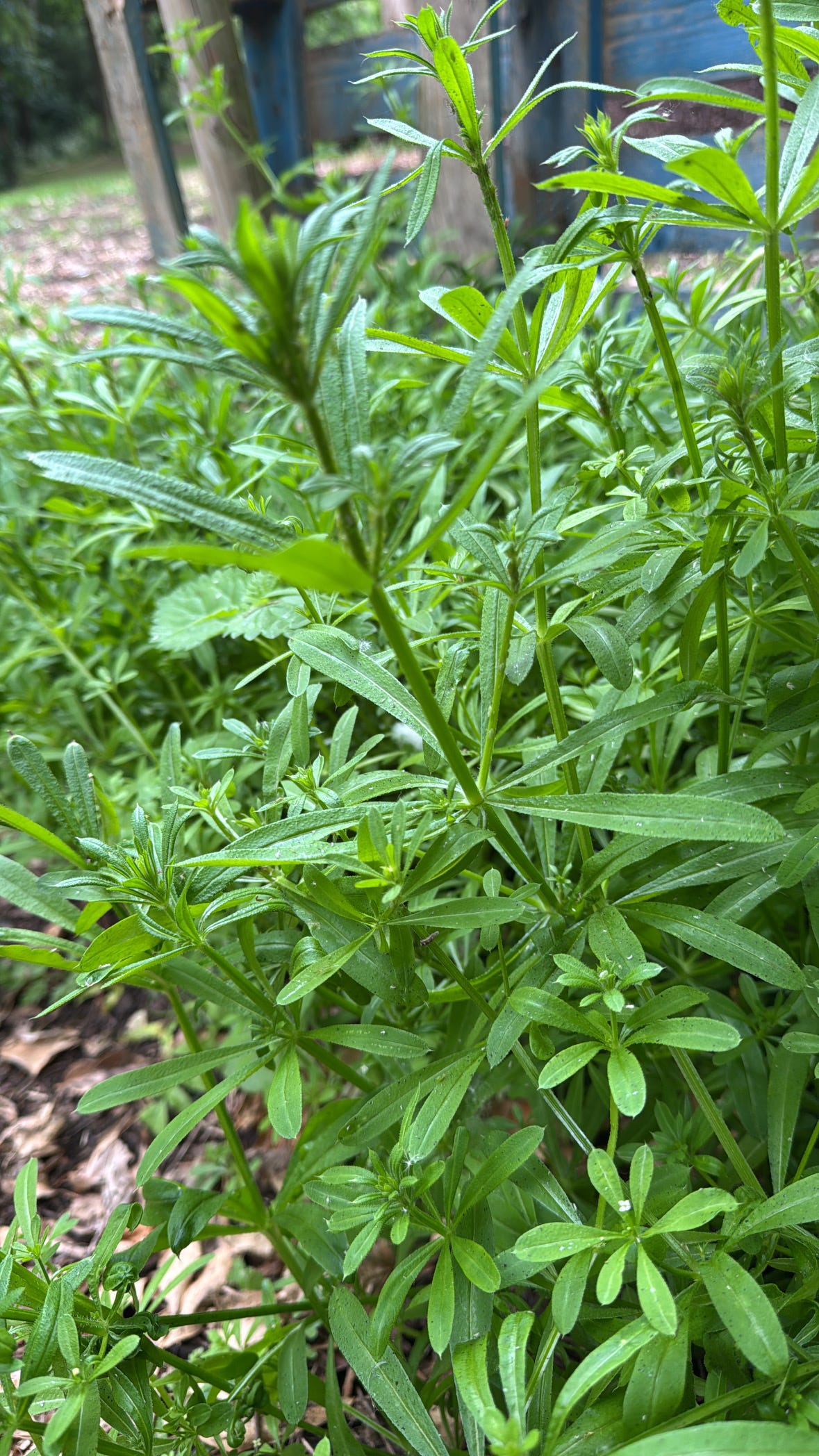🌿 Foraging Diaries: Cleavers, A Spring Wild Ingredient.
Wild about ‘sticky weed’ (cleavers) and their many benefits.
Majority of gardeners view it as a simple but rather bothersome sticky weed, but Cleavers (Galium aparine) also known as goosegrass is one of those humble wildflower weeds not quite given enough attention for its horticultural and magnificent medicinal benefits.
Plants, even the ones we often dismiss as common weeds, have fascinating backstories. Cleavers get their common name for their reputation to cleave to — as their hairy stem and fuzzy seed structure does adhere easily to passers-by — so their stems and seed may stick to your clothes or the fur of your pet and make their way back from a walk, right into your garden. What a cool way to disperse the next generation — hitchhike. A sneaky trait, but you’ve got to admire efficiency and tenacity.
As kids, many will tell you childhood stories of how they took advantage of those Velcro-like hairs and played a ‘throw and tag’ childhood game with the stems as some often did with the darts of flowering grasses.
Galium is a relative of coffee and alongside chicory (Cichorium intybus), makes one of the more superior coffee substitutes – the roasted seed rather than the roots are my preference. Galium has a Greek etymology linking to ‘milk’ and the selection of that name for its nomenclature indicates its connection with the dairy industry — not just as a sieve tool but also for centuries it has been employed as a curdling agent in yoghurt and cheese production.
What’s more, the high tannin content, cleavers in any consumable form, make a powerful astringent and amongst its active components, it contains coumarins which thin the blood and asperuloside which can be converted into prostaglandins that stimulate the uterus and affect blood vessels. All those traits can be utilised remedially, but as a culinary addition or for extended medical usage, it is generally advised to use for only two weeks at a time, and pause for one or two weeks before using again.
The plant is bursting with medicinal properties: antispasmodic; antiphlogistic; aperient; astringent; detoxificant; diaphoretic; diuretic; depurative; vulnerary; a noted lymphatic and urinary tract cleanser; refigerant; febrifuge; laxative; lowers blood pressure; sliming and tonic. The juice has stronger diuretic and laxative properties than infusions. It was once a common feature of cures for obesity and dropsy.
It is often noted that sap may cause contact dermatitis with sensitive skin but the plant also has a history of use as a cosmetic aid: A crushed leaf compress or a butter and juice salve has a remedial action on skin conditions and wounds. Cleavers are high in silica which is beneficial to hair, teeth and nails. The plant has been used as a cleansing lotion for acne and other conditions of the skin and as a cooled infusion to rinse dandruff prone scalps.
Crushed leaves neutralise acidic perspiration and helps soothe armpits. The infusion as a wash and detox-tea is beneficial to psoriasis, erythema and erysipelas. A decoction of the stems is said to address the redness and distress of sunburn.
Here’s how cleavers can be used as a food:
The stems, leaves, and fruits of the plant are all safe to consume.
Have you ever heard of cleaver-infused water? as a refreshing but also a ‘health’ drink. Simply pick the aerial parts before flowering, rinse under water and gently pat dry with a paper towel. Then slice a few stalks and add to a glass of water. Place in fridge and leave overnight to infuse. Strain and drink. The cold infusion acts as a lymphatic tonic and flavours the water quite nicely too.
Young shoots and leaves: They can be cooked as a vegetable, added to soups, or used in salads.
Fruits: The fruits, often dried and roasted, can be used as a caffeine-free coffee substitute.
Whole plant: A decoction of the dried plant can be used to make a tea-like beverage.
Foraging tip of the season: The best time to forage cleavers is in spring when the shoots are young and tender.



